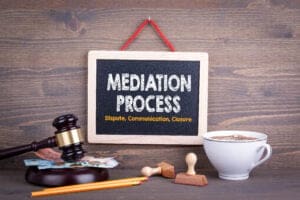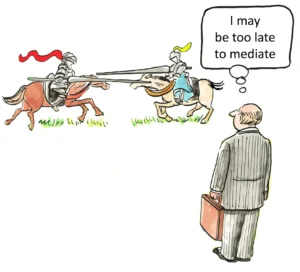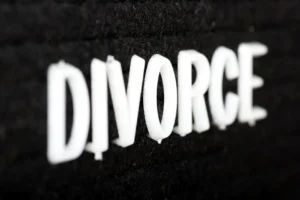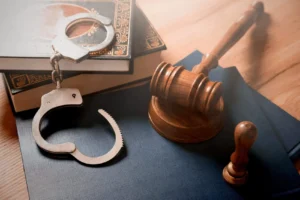Brady Violations: When Prosecutors Withhold Evidence
The integrity of our criminal justice system rests on the fundamental principle that the accused has a right to a fair trial. Central to this principle is the requirement that prosecutors disclose all material evidence favorable to the defendant. This obligation, known as the Brady rule, stems from the landmark Supreme Court case Brady v. Maryland. When prosecutors fail to meet this obligation, they commit what is known as a Brady violation, potentially undermining the fairness of the trial and the legitimacy of any resulting conviction.
Brady violations occur when prosecutors suppress or withhold exculpatory evidence that could be favorable to the defense. This evidence may cast doubt on the defendant’s guilt, undermine the credibility of prosecution witnesses, or mitigate the severity of the alleged offense. The suppression of such evidence, whether intentional or inadvertent, strikes at the heart of due process and the constitutional right to a fair trial.
The Brady rule derives its name from the 1963 Supreme Court case Brady v. Maryland. In this case, John Brady and a companion were convicted of first-degree murder and sentenced to death. The prosecution had withheld a statement from Brady’s companion confessing that he, not Brady, had actually committed the murder. The Supreme Court held that the suppression of this evidence violated Brady’s right to due process. This decision established the principle that prosecutors have a constitutional duty to disclose material, exculpatory evidence to the defense.
The scope of Brady obligations extends beyond merely exculpatory evidence. Subsequent Supreme Court decisions have clarified that prosecutors must also disclose impeachment evidence – information that could be used to challenge the credibility of prosecution witnesses. This expansion of Brady requirements recognizes that the reliability of witness testimony is often crucial in criminal trials, and defendants must have access to information that could cast doubt on that reliability.
One of the most troubling aspects of Brady violations is their potential to lead to wrongful convictions. When exculpatory or impeachment evidence is withheld, juries are deprived of crucial information that could influence their verdict. This can result in innocent individuals being convicted and sentenced for crimes they did not commit. The consequences of such miscarriages of justice are severe, not only for the wrongfully convicted but also for the integrity of the entire criminal justice system.
Identifying Brady violations can be challenging, as defense attorneys are often unaware of the existence of undisclosed evidence. In many cases, Brady violations come to light only years after a conviction, through post-conviction investigations or the efforts of innocence projects. This delay can compound the injustice, as individuals may spend years or even decades in prison before the violation is discovered and addressed.
The legal standard for establishing a Brady violation involves several elements. First, the evidence in question must be favorable to the accused, either because it is exculpatory or because it has impeachment value. Second, the evidence must have been suppressed by the state, either willfully or inadvertently. Finally, the defendant must show that the suppression of the evidence resulted in prejudice – that there is a reasonable probability that the outcome of the trial would have been different had the evidence been disclosed.
Courts have grappled with defining what constitutes “material” evidence for Brady purposes. The Supreme Court has held that evidence is material if there is a reasonable probability that its disclosure would have led to a different result at trial. This standard requires courts to assess the potential impact of the withheld evidence in the context of the entire case, considering both the strength of the prosecution’s case and the potential value of the undisclosed evidence to the defense.
The consequences of Brady violations can be severe. When a court finds that a Brady violation has occurred, it may overturn the conviction and order a new trial. In some cases, the violation may be so egregious that charges are dismissed entirely. Additionally, prosecutors who knowingly violate Brady obligations may face professional disciplinary action, including potential disbarment.
Despite the clear constitutional mandate and the potential consequences, Brady violations continue to occur with alarming frequency. A study by the National Registry of Exonerations found that prosecutorial misconduct, including Brady violations, played a role in more than half of the exonerations studied. This persistent problem raises questions about the effectiveness of current mechanisms for enforcing Brady obligations and ensuring prosecutorial accountability.
One proposed solution to reduce Brady violations is the implementation of “open file” discovery policies. Under such policies, prosecutors would be required to provide the defense with access to all evidence in their possession, rather than making discretionary decisions about what to disclose. Proponents argue that this approach would reduce the risk of inadvertent Brady violations and promote greater transparency in the criminal justice process.
Another area of concern is the application of Brady principles to plea bargaining. The vast majority of criminal cases in the United States are resolved through plea agreements rather than trials. Some courts have held that prosecutors have a duty to disclose Brady material even in cases that do not go to trial, recognizing that such information could influence a defendant’s decision to accept or reject a plea offer. However, the precise contours of this obligation remain a subject of debate and ongoing litigation.
The impact of Brady violations extends beyond individual cases to undermine public confidence in the criminal justice system as a whole. When prosecutors are seen as withholding crucial evidence, it erodes trust in the fairness of the process and the integrity of those tasked with administering justice. This loss of trust can have far-reaching consequences, affecting everything from jury selection to community-police relations.
One particularly troubling aspect of Brady violations is their disproportionate impact on marginalized communities. Studies have shown that prosecutorial misconduct, including Brady violations, is more likely to occur in cases involving defendants of color or those from low-income backgrounds. This disparity exacerbates existing inequities in the criminal justice system and further undermines its legitimacy in the eyes of affected communities.
The role of technology in both preventing and detecting Brady violations is an area of growing interest. Some jurisdictions have implemented electronic discovery systems that can help track and manage the disclosure of evidence, reducing the risk of inadvertent violations. Additionally, advances in forensic science and data analysis have made it possible to uncover previously unknown exculpatory evidence in old cases, leading to the discovery of Brady violations years or even decades after conviction.
Training and education for prosecutors on their Brady obligations is crucial for preventing violations. Many law schools and continuing legal education programs now offer specific courses on prosecutorial ethics and Brady compliance. However, critics argue that more needs to be done to instill a culture of compliance and ethical behavior within prosecutors’ offices.
The intersection of Brady obligations and national security concerns presents unique challenges. In cases involving classified information or sensitive intelligence sources, prosecutors may face conflicting pressures between their duty to disclose and their obligation to protect national security interests. Courts have struggled to balance these competing concerns, often resorting to in camera reviews and protective orders to manage the disclosure of sensitive information.
The role of police agencies in Brady compliance is another area of ongoing debate. While the Brady rule primarily addresses prosecutorial obligations, courts have recognized that prosecutors have a duty to learn of and disclose favorable evidence known to others acting on the government’s behalf, including law enforcement. This has led to discussions about the need for better communication and information-sharing protocols between police departments and prosecutors’ offices.
One emerging trend in addressing Brady violations is the creation of conviction integrity units within prosecutors’ offices. These units are tasked with reviewing past convictions for potential errors or misconduct, including Brady violations. While these units have led to numerous exonerations, critics argue that they are not a substitute for robust compliance measures to prevent violations from occurring in the first place.
The impact of Brady violations on sentencing is an area that has received increased attention in recent years. Courts have recognized that exculpatory or mitigating evidence can be material not only to the determination of guilt but also to the severity of the sentence imposed. This has led to challenges of sentences based on newly discovered Brady material, even in cases where the underlying conviction remains intact.
The role of appellate courts in addressing Brady violations is crucial but often limited. The deferential standard of review applied to trial court decisions can make it difficult for appellate courts to overturn convictions based on Brady claims. Additionally, procedural barriers such as time limits on filing appeals can prevent defendants from raising Brady claims even when new evidence comes to light.
The intersection of Brady obligations and the increasing use of big data and predictive algorithms in law enforcement presents new challenges. As police agencies rely more heavily on data-driven policing techniques, questions arise about the scope of Brady obligations with respect to the underlying data and algorithms used to generate leads or target investigations.
The potential for Brady violations in cases involving confidential informants is a persistent concern. The use of informants often involves promises of leniency or other benefits that could be considered impeachment evidence under Brady. Ensuring that all such agreements are properly disclosed to the defense remains a challenge, particularly in cases involving multiple law enforcement agencies or long-term investigations.
The impact of Brady violations on plea bargaining practices is an area of ongoing legal development. Some courts have held that the government’s failure to disclose Brady material during plea negotiations can be grounds for withdrawing a guilty plea. This recognition of the importance of Brady disclosures in the plea bargaining context reflects the reality that the vast majority of criminal cases are resolved without trial.
The role of professional disciplinary bodies in addressing Brady violations remains a subject of debate. While egregious violations can lead to sanctions against individual prosecutors, critics argue that disciplinary actions are too rare and often too lenient to serve as an effective deterrent. Some have called for more robust oversight mechanisms and stricter enforcement of ethical rules governing prosecutorial conduct.
The impact of Brady violations on victims of crime is an often-overlooked aspect of this issue. When convictions are overturned due to Brady violations, victims may be forced to relive traumatic experiences through new trials or may lose faith in the justice system entirely. Balancing the rights of defendants with the interests of victims in cases involving Brady violations remains a challenging ethical and practical consideration.
The potential for Brady violations in cases involving forensic evidence has gained increased attention in light of advances in scientific understanding and high-profile cases of flawed forensic testimony. Ensuring that defendants have access to all relevant information about forensic techniques and potential limitations of scientific evidence is crucial for fair trials and accurate verdicts.
The role of media coverage in exposing and addressing Brady violations is significant. Investigative journalism has played a crucial role in uncovering systemic problems with evidence disclosure in many jurisdictions. However, the decline of local news coverage in many areas has raised concerns about the ability to detect and publicize such violations in the future.
The impact of Brady violations on public defenders’ offices is substantial. The need to investigate potential Brady violations and litigate claims of prosecutorial misconduct places additional strain on already overburdened public defense systems. This can exacerbate existing inequities in the quality of representation available to indigent defendants.
The intersection of Brady obligations and the increasing use of body-worn cameras by law enforcement presents both opportunities and challenges. While such recordings can provide valuable evidence that must be disclosed under Brady, the volume of data generated by these devices can make thorough review and disclosure logistically challenging for prosecutors’ offices.
The potential for Brady violations in cases involving international evidence or cross-border investigations raises complex legal and practical issues. Ensuring compliance with Brady obligations in cases that involve foreign law enforcement agencies or evidence located in other countries can be particularly challenging, requiring careful coordination and clear protocols for information sharing.
In conclusion, Brady violations remain a persistent and serious threat to the integrity of the criminal justice system. Addressing this issue requires a multifaceted approach, including improved training and oversight for prosecutors, enhanced disclosure protocols, and robust mechanisms for detecting and remedying violations when they occur. As our understanding of the scope and impact of Brady violations continues to evolve, so too must our efforts to prevent them and ensure that every defendant receives the fair trial guaranteed by the Constitution.
Website citations:
https://scholarship.law.uwyo.edu/cgi/viewcontent.cgi?article=1337&context=wlr
https://www.oyez.org/cases/1962/490
https://www.shouselaw.com/ca/blog/brady-violation/
https://ktul.com/news/local/new-report-on-prosecutorial-misconduct-calls-for-oklahoma-justice-system-reform-oklahoma-appleseed-center-for-law-and-justice-the-truth-will-always-come-out-prosecutorial-misconduct-brady-violations-and-lack-of-justice-in-oklahoma-brady-v-maryland-ruling
https://okcfox.com/news/local/prosecutor-prosecutorial-misconduct-criminal-justice-reform-oklahoma-appleseed-center-for-law-and-justice-study-report-wrongful-conviction-convictions-colleen-mccarty-the-truth-will-always-come-out-brady-violations-lack-cases-exonerated-tulsa-pontotoc
https://www.law.cornell.edu/wex/brady_rule
https://www.quimbee.com/cases/brady-v-maryland
https://deathpenaltyinfo.org/prosecutorial-misconduct-and-brady-claims-closely-examined-in-forthcoming-article
https://whitecollarattorney.net/brady-material/


















